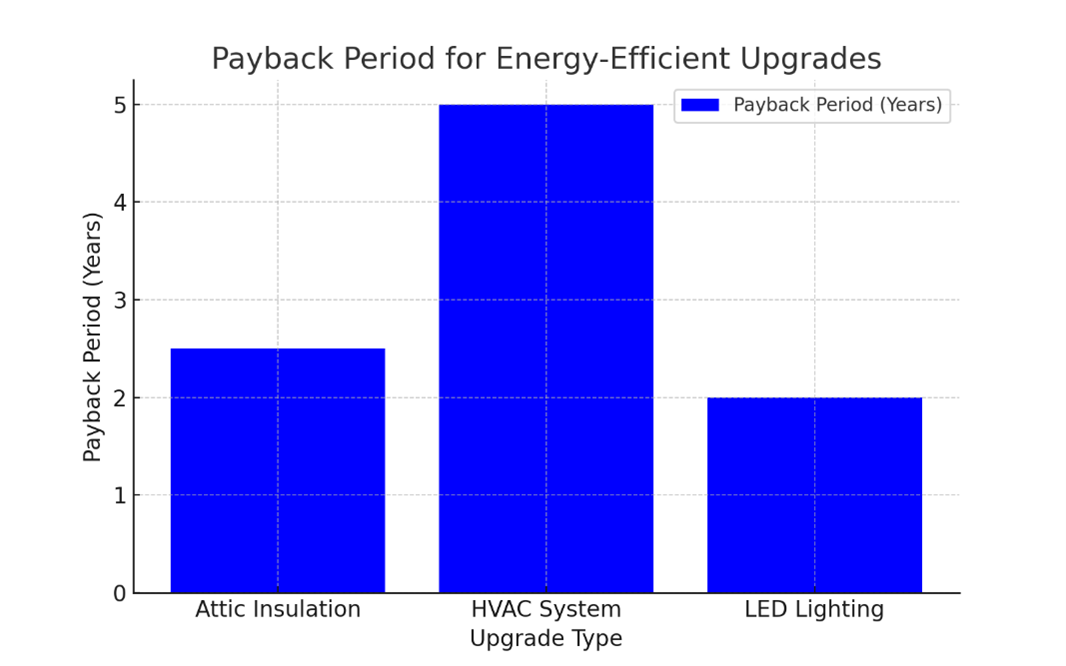Budgeting for Energy-Efficient Upgrades
Financial Resilience ?? Comments 30/Jan/2025 ThuInvesting in energy-efficient upgrades is a smart long-term strategy to reduce energy costs, improve home comfort, and lower environmental impact. However, these upgrades often require upfront investments, making proper budgeting essential. By planning strategically and leveraging available tools, households can allocate resources effectively and maximize the return on their investments. Below are practical steps to help with budgeting for energy-efficient upgrades.
Practical Steps
-
Use Online Calculators to Estimate Savings from Energy-Efficient Appliances
Online calculators are a valuable tool for determining the financial benefits of energy-efficient upgrades. Tools provided by ENERGY STAR, utility companies, or government programs allow users to compare the energy consumption and operating costs of different appliances. For example, a calculator can estimate how much money a household could save annually by replacing an old refrigerator with an ENERGY STAR-certified model.
These calculators also provide insight into the payback period for an investment, helping homeowners prioritize upgrades based on their budget and expected savings. For instance, if replacing a heating system costs $3,000 but saves $300 annually in energy costs, the payback period is approximately 10 years, after which the savings translate into direct financial benefits.
-
Allocate Funds Monthly to Invest in Upgrades Like Energy-Efficient Windows
Energy-efficient upgrades can often be costly upfront, but allocating a portion of the household budget each month toward these improvements can make them more manageable. For example:
-
Identify specific upgrades to prioritize, such as replacing old windows with energy-efficient ones that reduce heating and cooling costs by minimizing air leakage.
-
Set a realistic monthly savings goal by analyzing your household income and expenses. For instance, setting aside
$100 per month can lead to $1,200 in savings within a year, which could cover part of an upgrade's cost. Breaking down large expenses into smaller, manageable savings goals reduces financial stress and ensures progress toward energy-efficient investments.
-
-
Prioritize High-Impact, Low-Cost Upgrades First
Some energy-efficient upgrades are relatively inexpensive yet offer significant savings. For instance, replacing incandescent bulbs with LED lights or adding weatherstripping to windows and doors requires a minimal investment but delivers immediate energy savings. Budgeting for these quick-win improvements first allows households to see financial benefits sooner, which can then be reinvested into larger projects.
-
Explore Financing Options for Major Upgrades
For larger investments, such as installing energy-efficient HVAC systems or solar panels, consider exploring financing options to spread out the costs. Many utility companies, state energy programs, and banks offer low-interest loans or no-interest payment plans specifically for energy-efficient upgrades. Programs such as Property Assessed Clean Energy (PACE) financing allow homeowners to fund upgrades through property tax payments, making it easier to manage costs over time.
-
Leverage Rebates, Tax Credits, and Incentives
Incorporate available rebates, tax credits, and incentives into your budgeting process to reduce the net cost of upgrades. For example, the federal Residential Clean Energy Credit offers a 30% tax credit for solar panel installations, significantly lowering the initial expense. Similarly, many state and local programs provide rebates for purchasing energy-efficient appliances or installing insulation. Research these opportunities in advance to ensure they’re factored into your financial planning.
-
Create a Long-Term Energy Efficiency Plan Developing a multi-year plan for energy-efficient upgrades can help households budget more effectively. Start by conducting an energy audit (professionally or using DIY tools) to identify the areas with the most significant energy waste. Then, rank potential upgrades by cost, payback period, and overall impact. For example:
- Year 1: Replace incandescent bulbs, install weatherstripping, and upgrade to a smart thermostat.
- Year 2: Invest in energy-efficient windows or insulation.
- Year 3: Replace HVAC systems or install solar panels. Spreading out investments over time ensures affordability while steadily improving energy efficiency.
-
Track and Monitor Energy Savings
After making upgrades, track energy savings using utility bills or energy monitoring systems. Comparing pre- and post-upgrade data helps confirm the return on investment and allows homeowners to adjust their plans if needed. Savings can be reinvested into additional upgrades, creating a cycle of continuous improvement.
Key Benefits of Budgeting for Energy-Efficient Upgrades
-
Cost Management:
Proper budgeting allows households to manage the costs of upgrades without financial strain, making energy efficiency achievable for a wider range of incomes.
-
Improved Financial Returns:
By prioritizing upgrades with shorter payback periods, households can enjoy immediate savings, which can be reinvested into additional improvements.
-
Environmental Impact:
Strategic planning ensures that investments are directed toward the most impactful upgrades, contributing to significant reductions in energy consumption and carbon emissions.
-
Enhanced Home Value:
Energy-efficient upgrades increase the value of a home, offering long-term benefits for homeowners who plan to sell their property in the future.
By following these practical steps and carefully planning their budgets, households can confidently invest in energy-efficient upgrades, enjoying both immediate and long-term financial and environmental benefits.
Example: A household created a monthly budget and replaced their old windows with energy-efficient ones, cutting heating costs by 30%.

Tags: energy